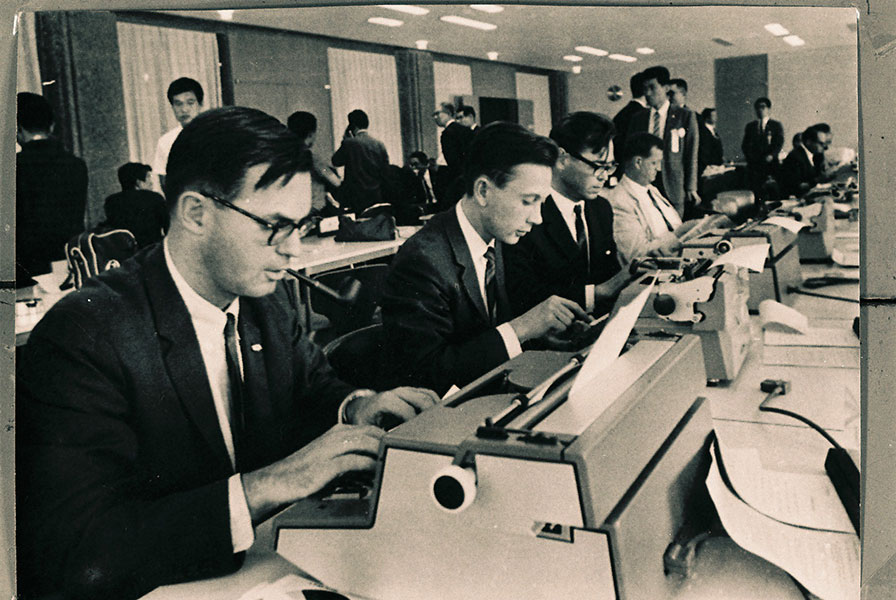- 1957An International Conference Center for Japan
- 1959Selecting Takaragaike in the city of Kyoto as the construction site
- 1962Open design competition
- 1963Sachio Otani picked as the architect
- 1964Construction from start to completion
- 1966Establishing an administrative foundation
- 1966Opening
- 1966Opening event for the international conference center
Holding the “5th US-Japan Joint Committee on Trade and Economic Problems” - 1967Completion of the Hosho-an Tea House
- 1968Joining AIPC
- 1973Completion of the Press Center
- 1978Joining ICCA
- 1985Completion of the Event Hall
- 1986Construction of the hotel
- 1997Extension of the subway
- 1998Completion of the Annex Hall
- 2001Improving access (From the subway to the main entrance)
- 2003Environmental considerations (Cogeneration, installing wastewater equipment)
- 2003Establishment of the Media Center
- 2011Shift to a public interest incorporated foundation
- 2015Earthquake resistance renovations to the Main Hall, etc.
- 2016Beginning of construction on the New Hall
- 2016-Into the future-



























































































































